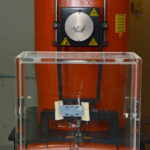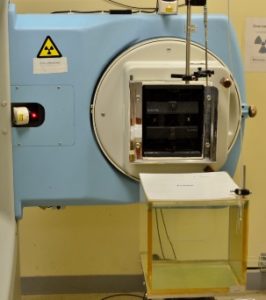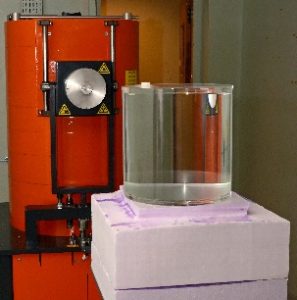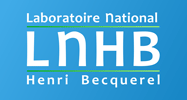Cobalt and cesium irradiators

Our mission: connecting users to gray and sievert units

One of the LNHB’s missions is to transfer the gray (Gy), as well as the sievert (Sv), to users, which can be radiotherapy centres, industrialists, research laboratories, surveillance authorities and so on. Flexible, we can calibrate ionization chambers, prototype detectors, irradiate passive dosimeters or any other equipment (to test the ageing of materials under ionizing radiation or simulate cosmic radiation), or make equipment and personnel available for testing.
Our resources: sources of cobalt 60 and cesium 137

The LNHB has seven beams from radioactive sources: four cobalt 60, from a few micrograys per hour to a few grays per hour, and three cesium 137, from a few micrograys per hour to several hundred milligrays per hour. The fields concerned in radiotherapy are the dose in water (in a water phantom of 30 cm x 30 cm x 30 cm), as well as the kerma in air, with cobalt 60. The field size is 10 cm x 10 cm at the reference distance. For the field of radiation protection, the laboratory may calibrate dosimeters whose geometry is compatible with irradiators, whether in air kerma, ambient dose equivalent or individual dose equivalent, cesium 137 and/or cobalt 60. A water phantom is adapted in function of the considered operational quantity (e.g. body or head).
Our job: metrology
dosimetry
Implemented methods for the establishment of national references must be adapted to the radiation type and its intensity. They are based on measurement technics such as calorimetry, ionometry and chemical dosimetry.
Radioactivity
The variety of the emitted radiation and physical forms of the sources oblige to adapt the measurement process in order to establish national references: methods with defined geometries, or 4 π countings geometries, coincidence countings, etc.
